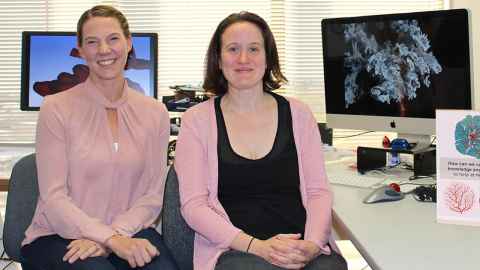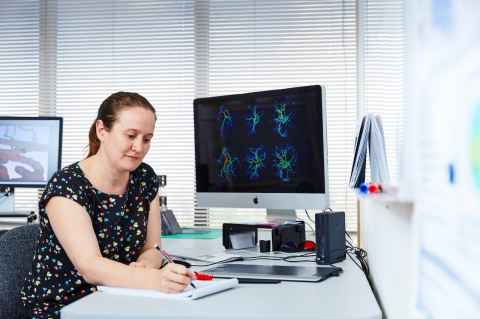World-first virtual pregnancy wins top Marsden funding
8 November 2018
An international project to create a world-first virtual pregnant uterus has won the University of Auckland’s Bioengineering Institute top Marsden funding.

Bioengineer Dr Alys Clark and biomedical scientist Dr Jo James have been awarded $954,000 over three years to research the anatomy and physiology of the blood vessels in the uterus so they can create a computational anatomic atlas of its structure and function in pregnancy.
“While other projects around the world are researching and making models of the individual parts of the uterus, we’re trying to understand how it works as a whole system,” says Dr Clark.
Working internationally with researchers from Oxford and Cambridge Universities, the Auckland team (co-led out of Bioengineering and the Faculty of Medical and Health Sciences) will use the virtual model to study how blood vessels in the uterus contribute to blood flow to the placenta.
“The placenta acts as a life support system for a growing fetus during pregnancy by delivering oxygen and nutrients from mum’s blood and eliminating waste,” says Dr James.
The ‘virtual uterus’ will mimic dynamic changes in blood vessel structure and simulate interactions between the blood circulations of the uterus and placenta during pregnancy.
It does this by actively modifying the blood vessels in the uterus to increase blood flow to the developing baby. However, this process fails in 10 percent of pregnancies, leading to fetal growth restriction (FGR) where babies are born abnormally small.
“We are very poor at predicting this disorder,” says Dr James. “We have no way to predict which babies will be affected at an early stage of the pregnancy, and around half of pregnancies affected by FGR are not diagnosed until delivery, even with modern medical imaging.”
“Our inability to effectively predict FGR is partly because we have a very poor understanding of how the uterus delivers blood to the placenta, even in normal pregnancy,” she says.
The Auckland team will investigate how changes in blood flow could affect a mother’s ability to nourish her baby. Past research has focused on small blood vessels between the uterus and the placenta. However, computational models the team has already built suggest that larger blood vessels also play an important role in regulating blood flow to the placenta.
The ‘virtual uterus’ will mimic dynamic changes in blood vessel structure and simulate interactions between the blood circulations of the uterus and placenta during pregnancy.
“It will help us better understand how mum delivers effective nutrition to the developing fetus, and likely lead to improved early detection and diagnosis of FGR, which happens when this process is suboptimal.structure and simulate interactions between the blood circulations of the uterus and placenta during pregnancy.
“Early diagnosis of fetal growth restriction is essential to allow us to intervene with novel treatments for these abnormal pregnancies.”

Contact Tess Redgrave |Media Adviser
Tel: 09 923 7383 Mob: 027 562 5868
Email: t.redgrave@auckland.ac.nz
Join our ABI mailing list
Don't miss out on the latest news from the Auckland Bioengineering Institute - join our mailing list so we can keep in touch.